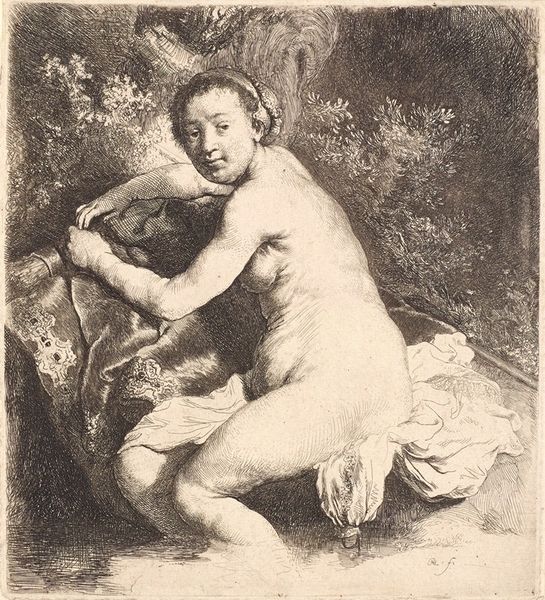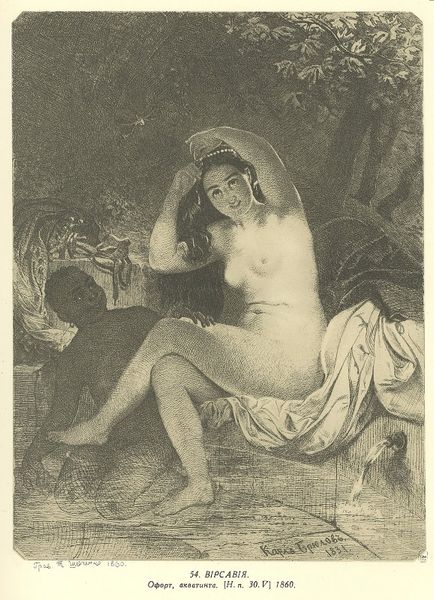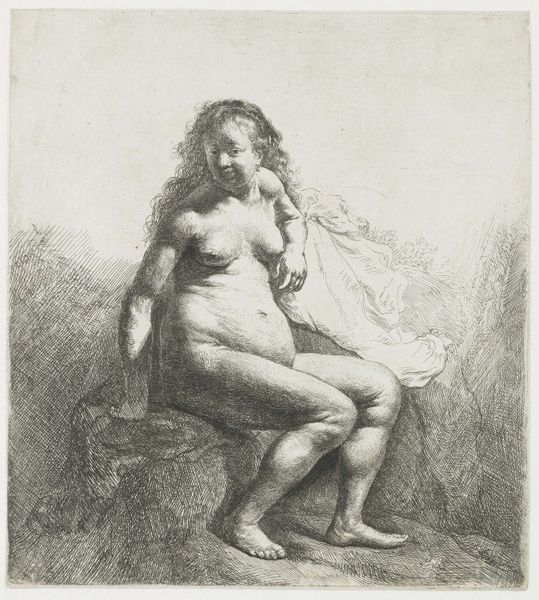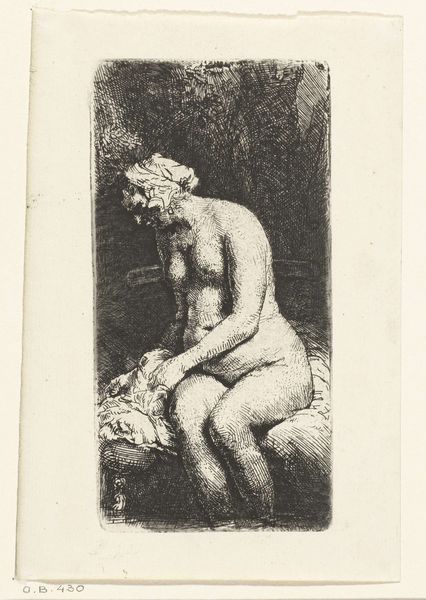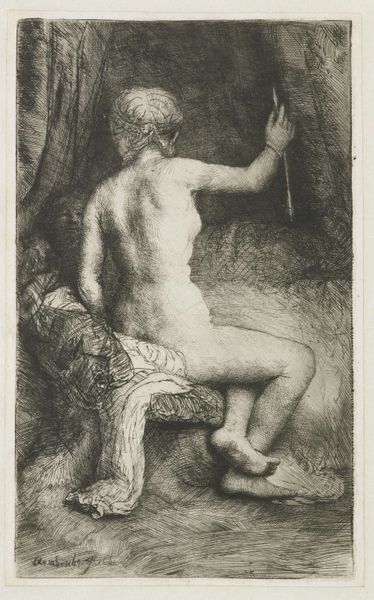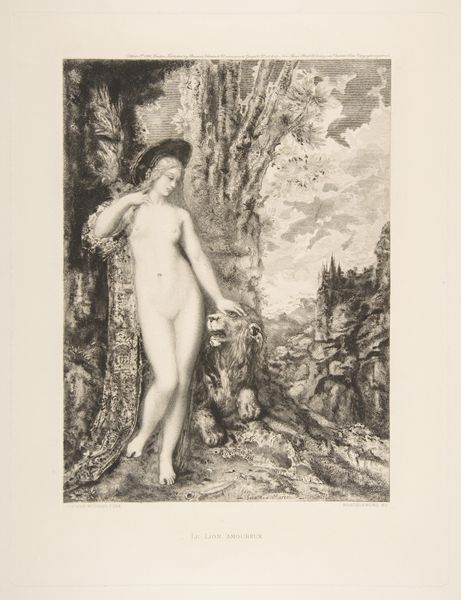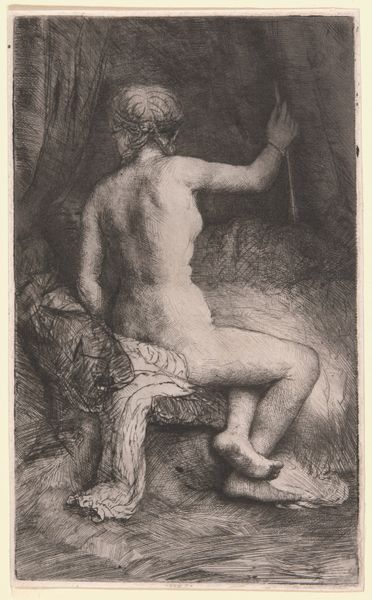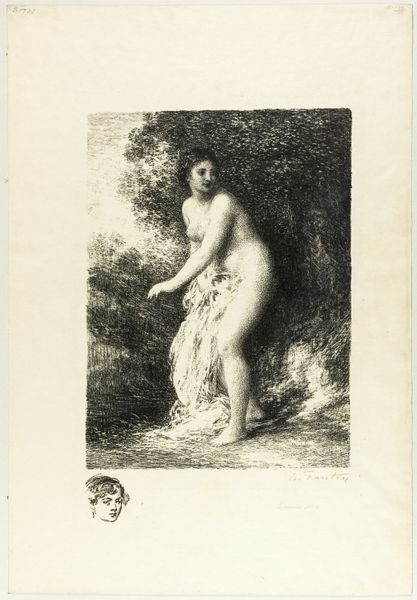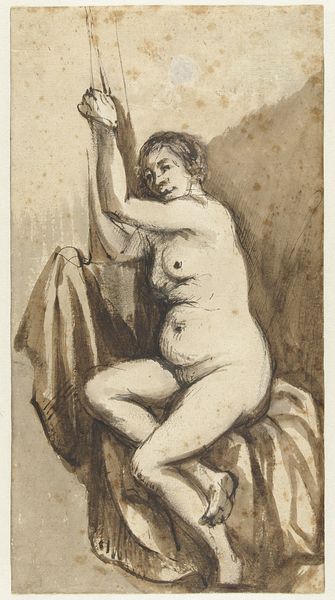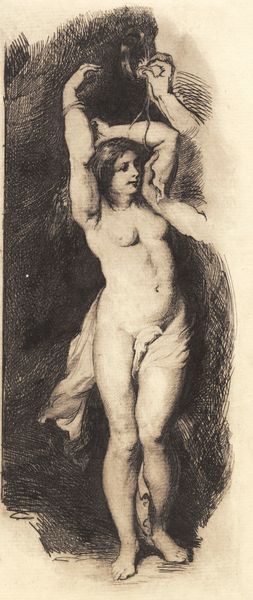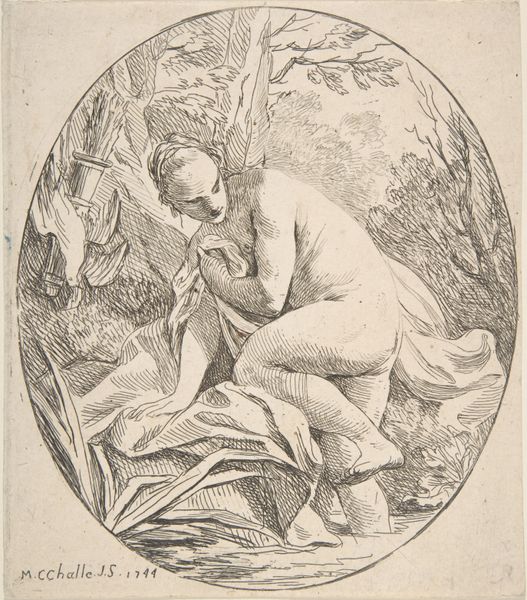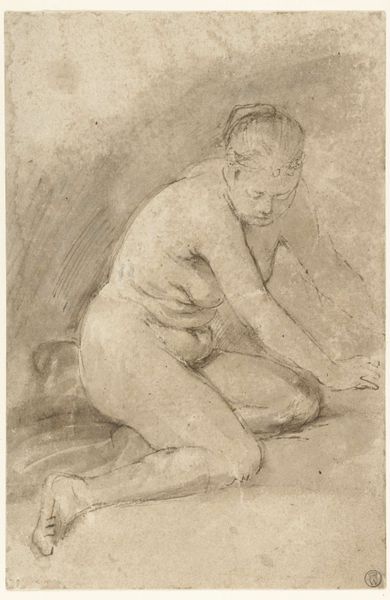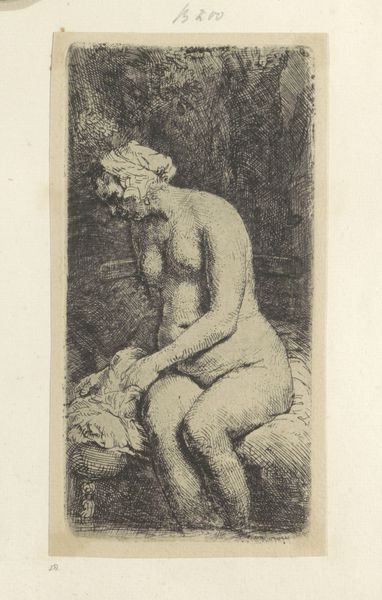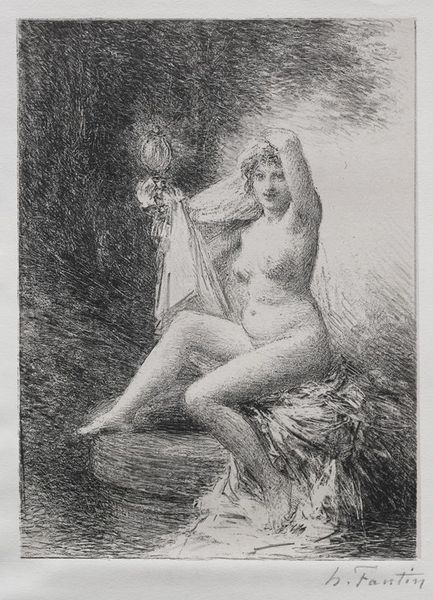
etching, intaglio
#
portrait
#
allegory
#
baroque
#
dutch-golden-age
#
etching
#
intaglio
#
portrait reference
#
portrait drawing
#
nude
Dimensions: height 174 mm, width 158 mm
Copyright: Rijks Museum: Open Domain
Editor: Here we have Rembrandt van Rijn’s “Diana at the Bath,” an etching made around 1631 and currently held at the Rijksmuseum. The figure seems oddly posed and almost unfinished, which feels different from some of Rembrandt’s other work I've seen. What strikes you most about the composition? Curator: What I notice first is the striking interplay of light and shadow achieved through the intricate lines. Notice how Rembrandt uses denser hatching to model form and create depth, contrasting those dark areas against the relatively untouched paper that defines Diana's skin. How would you describe the impact of this contrast on the overall structure? Editor: I suppose that the strategic use of light and shadow does guide the eye to different parts of the figure. There seems to be an emotional distance to the scene. It is not an ideal nude. Curator: Indeed, and the materiality is key here. Consider the medium itself—etching—and how Rembrandt exploits the etched line's inherent qualities to produce varying degrees of tonal richness. This manipulation of the line is significant in constructing both form and emotional resonance. Editor: That's a really interesting point about the technique itself influencing the mood of the piece! Looking at it through that lens makes it feel less like a sketch and more like a considered artistic choice. Curator: Precisely. Paying attention to formal decisions lets us engage with art on its own terms. What seemed 'odd' becomes integral. Editor: That gives me a lot to think about, especially concerning the link between technique and artistic expression. Thank you.
Comments
No comments
Be the first to comment and join the conversation on the ultimate creative platform.
